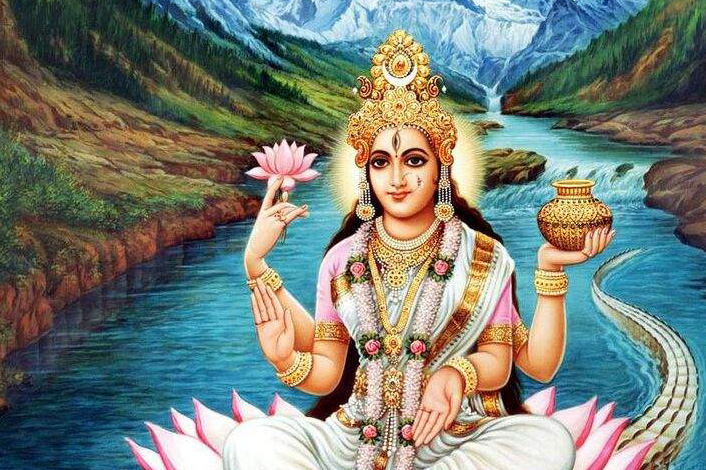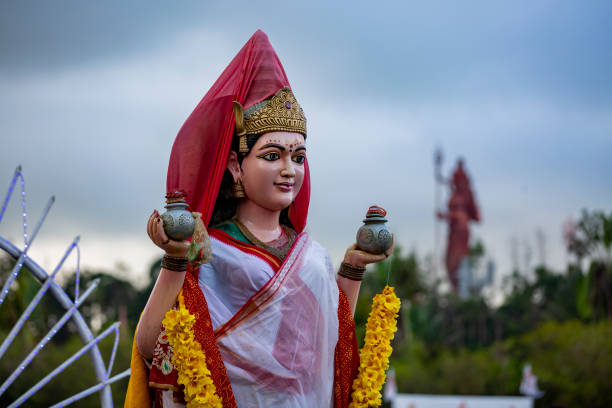Ganga

Hindus revere Ganga, the river Ganges' personification, as the goddess of atonement and purification. Ganga, who goes by various names, is frequently pictured as a fair, lovely woman riding a wonderful crocodile-like animal known as the Makara. The Rigveda has some of the first references to Ganga, referring to her as the holiest of the rivers. Her tales are primarily found in post-Vedic literature like the Ramayana, Mahabharata, and Puranas.
She is referred to in the Ramayana as the firstborn of Himavat, the Himalayas' representative, and the sister of the mother goddess Parvati. Other sources, however, refer to her ancestry as coming from the preserver god Vishnu. Legends center on her descend to Earth, which was facilitated by the god Shiva with the help of a royal sage named Bhagiratha. In the epic Mahabharata, Ganga is the union of the Kuru king Shantanu and the hero Bhishma's mother.
In Hinduism, Ganga is revered as humanity's mother. In order to bring their ancestors' souls (purified spirits) closer to moksha—the release from the cycle of life and death—pilgrims immerse their ashes in the Ganga river. At various holy locations along the banks of the Ganges, including Gangotri, Haridwar, Prayagraj, Varanasi, and Kali Ghat in Kolkata, festivals like Ganga Dussehra and Ganga Jayanti are observed in her honor. During the Loy Krathong holiday in Thailand, Ganga is revered with Gautama Buddha.










